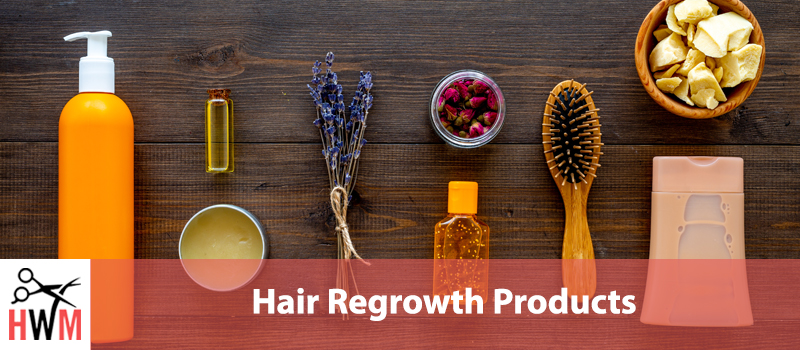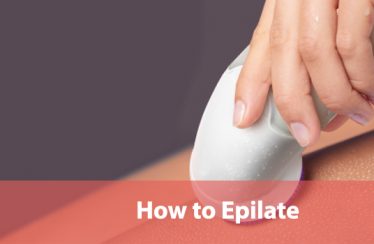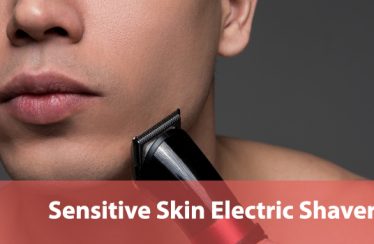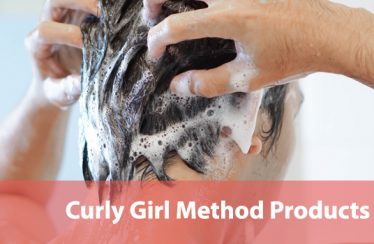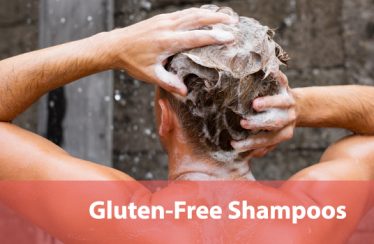We all want to have thick, luscious, heads of hair. It’s a symbol of youth, vitality, and beauty. But, the reality is that thick, incredible hair, isn’t natural on every single head.
Whether you’ve experienced hair loss, or are looking to boost growth after a bad hair-cut, there are thousands of products boasting incredible hair in just a few weeks. If you’re anything like me, you can’t escape ads for the latest celebrity-endorsed miracle hair product.
But, which products work, and which are snake oil?
It’s genuinely hard to tell. Not to mention that not all effective products will be effective for you. So, in this article, we’re diving in. We’ll talk about why there is so much variety in hair re-growth and how the products work.
We also provide a guide to each type of product, what to look for, how to use it, and when you can expect results.
- Why Are There So Many Different Types of Hair Growth Product?
- What Do Hair Regrowth Products Treat?
- Hair Regrowth Product Overview
Why Are There So Many Different Types of Hair Growth Product?
This is a tricky question. The short answer is because there are many different types of hair. But, the real answer is a combination of different hair and skin types, and thus different needs, along with ease of application, purpose, and effectiveness.
Effectiveness? So, wait, some hair growth product types don’t work at all? Well, no. But some products are geared for different types of hair growth. For instance, a hair growth shampoo might be targeted at alleviating the causes of hair loss, or it might be targeted at increasing the speed existing hair grows.
Those are two different purposes, and each will be most effectively used to treat one particular problem.
Part of this equation is also ease of use. While some people are willing to do a hair mask three times a week, take a daily supplement or two, drink hair-boosting tea, and apply a nightly hair growth serum, most people want something a little simpler.
So, different products are designed to work either synergistically with a product system, or on their own. Both methods can be effective. But you’ll usually get better results using several products that target different aspects of hair growth.
Still, products that take care of the issue on their own are fantastic, right?
That’s why there are many easier product types on the market now. It’s easier to sell someone a foam or a spray that’s easy to apply and works with or without other products.
Depending on why you’re looking at hair regrowth products, you may be happy using only one type of product (whichever is easiest for you). Or, if hair regrowth is more urgent, or you want to see more significant regrowth, you may decide to combine several product types to boost your results.
What Do Hair Regrowth Products Treat?
There isn’t one single answer to this question. But, it’s an important question to ask when you’re picking out a regrowth product.
There are just as many treatments for hair regrowth as there are reasons for wanting it. Here we’ll highlight some of the most important, and most impactful, things hair regrowth products target.
Hair Breakage
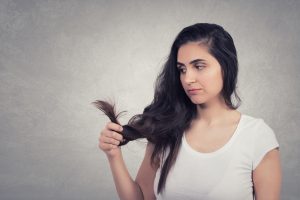
You’re probably wondering why hair breakage would factor in to hair regrowth. The truth is that hair breakage has a significant impact on how quickly your hair grows. Severe breakage can even mimic the appearance of hair thinning and loss.
This treatment is meant for people who are trying to regrow hair after getting it cut or giving a donation. It’s also important for those suffering hair loss since hair health usually also declines when you’re losing strands. But it’s only a secondary treatment for hair loss. It’s a primary treatment for hair regrowth.
Hair grows relatively slowly. Some people may grow as much as an inch of hair a month, maybe even a little more. But many people grow hair more slowly.
Your actual rate of growth is heavily impacted by how much length you lose to breakage. That’s why many people think that trimming your hair makes it grow faster. It doesn’t. But it does improve the health of your hair so that the strands don’t break.
You gain more growth, but it’s because you aren’t losing hair, not because you’re growing more.
Hair Texture
Another common treatment for hair re-growth is addressing hair texture. This treatment addresses the problems associated with hair loss and thinning more than people who want to re-grow hair after a cut.
Thinning hair strands, where your hair becomes finer but not necessarily less dense, can be one of the precursors of hair loss. It’s also a common symptom of chemo. When your hair grows back it comes in a different texture than it was before.
Most regrowth products that help with hair texture work to thicken each strand of hair. They add volume and make the individual strands more robust rather than increasing the number of strands there.
Some go the other direction, encouraging hair to grow in straighter and tamer than before. However, since that’s usually more of a challenge with thick heads of hair, it’s debatable whether those shampoos and treatments count as regrowth products.
Hormones
One of the most common causes of hair problems, be it thinning hair, slow growth, greasiness, or texture problems, are hormones. DHT, or dihydrotestosterone, causes all manner of hair problems.
Re-growth treatments will often either try to circumvent the symptoms of DHT, by stimulating the scalp and increasing circulation or will try to decrease DHT concentration in your scalp in the first place.
These treatments won’t typically help with the hair changes brought on by puberty (sorry).
But, other common hair re-growth treatments do attempt to address hair problems caused by aging and menopause. Both can be addressed, on some level, through hormone regulation.
Though, hormones aren’t the only problems regrowth treatments targeted at menopause and age will treat. You should know that it’s in the background, however. If you’re taking hormones or other aging-related medications, you should mention your hair concerns and products at your next doctor’s appointment.
Stress
Hair re-growth treatments (mostly) won’t reduce your stress levels. Sure, they can help eliminate the stress of hair problems, but they aren’t a miracle cure for relationship problems, work problems, or financial concerns.
Instead, these products tend to target the secondary symptoms of stress while promoting conditions that are good for your hair.
Stimulating circulation, for instance, can be done with lavender and eucalyptus. Both scents have also been shown to have an aromatherapy benefit to stress.
But other ingredients, like caffeine, help with other aspects of high stress and hair problems. You may also find anti-microbial and anti-bacterial treatments in hair regrowth products. Since you’re more vulnerable to microbial imbalances when you’re stressed, those treatments can be an important aid if you’re trying to grow more hair while stressed.
Diet and Overall Health
The last thing many hair re-growth products target is diet and overall health. That’s why many hair growth and regrowth supplements contain several key dietary nutrients. They’re an attempt to fill dietary requirements of the most important nutrients for hair growth.
Other supplements and hair growth teas may be targeted at addressing underlying health issues while supporting hair regrowth. These may be a combination of treating hormonal issues, digestive problems, reducing stress, or all three.
Since we know that hair is one of the first parts of the body to respond to poor physical health and nutrient deficiencies, many hair regrowth products target far more than just your hair. Although these products shouldn’t be considered a replacement for a healthy lifestyle and nutritious diet, they can help bridge any gaps.
Hair Regrowth Product Overview
While each product type has a lot of variation, some generalities are shared across each. You should always read the specific instructions on your products. But, if you’re not sure what products will work best for you, this list will give you a better sense of how the products work and what you can expect.
Scientifically Proven Regrowth Treatments
Both treatments are medically approved. They are some of the only treatments that can say that they are proven to re-grow hair and to encourage more and thicker hair growth. While some studies may support other treatment programs, those treatments haven’t been tested rigorously enough to be considered proven.
Still, that doesn’t mean that these are the only effective treatments. It doesn’t even mean that these treatments will be the best option for you.
Minoxidil (Rogaine)
This is probably the most well-known hair re-growth treatment. The first proven treatment, Minoxidil, commonly called Rogaine, is a daily topical scalp treatment that directly encourages hair growth.
It works by increasing the number of active growth hair follicles you have at any given time. It also increases the rate of hair growth from those follicles. Lastly, Rogaine works to reverse follicle shrinkage, which both increases how many hair strands are growing and increases the thickness of those strands.
But, Rogaine takes about 6 months to show serious results. It’s also not a one-time fix. Once you start using Rogaine, all the hair Rogaine helps you grow or keep is dependent on the product. Within a few weeks of stopping, your hair will thin and your growth rate will slow.
Don’t worry, your hair won’t get worse than it was without the Rogaine. You’ll just lose the benefits of the product.
Finasteride (Propecia)
Finasteride is another scientifically proven treatment the requires a prescription from your doctor. It’s primarily available to men since there haven’t been studies performed on women. Originally developed as a treatment for enlarged prostate, it was noticed that patients noticed increased hair growth and improved hair health.
While still used as a prostate treatment, it’s now also available as a hair treatment. The dose for treating hair loss and thinning is significantly smaller than the prostate treatment, however. That also means that your insurance is less likely to cover finasteride used for hair and will likely spot the difference in the prescriptions.
Like Rogaine, once you begin taking finasteride for hair growth, you must continue treatment to continue seeing results. It takes about 6 months for the full effect of the treatment to show. But it takes only a few weeks without finasteride to lose its effects.
It’s typically taken once daily. If interested, talking to your doctor or dermatologist to find out more.
Supplements

While supplements still suffer from a lack of effective regulation, and thus quality control, they can be an incredibly powerful hair re-growth tool.
Certainly, there are supplements we aren’t discussing that can help increase your rate of re-growth, and even increase how much hair you have. But these are some of the most important.
Also, if you are not already taking a multi-vitamin, now is a good time to start. Multi-vitamins are the most scientifically supported supplements, and multi-vitamins from a good company are thought to be an overall health benefit. Your hair won’t be able to help but improve, given access to the nutrients it needs.
Hair Skin and Nails
This is the most common supplement people take when they want to encourage hair regrowth. Many hair skin and nails preparations include several of the other vitamins on this list, and almost all contain biotin.
It’s worth looking at the ingredients to see if they list more than just biotin, or biotin and vitamin c.
Like most supplements, it will take a few months of taking them regularly to really evaluate the difference in your hair. But, you may start seeing more luster in your hair and skin within a couple of weeks of starting the new vitamin.
We recommend going with a capsule version of this vitamin, despite the prevalence of gummy vitamins, simply because they tend to have higher concentrations of their key ingredients. One exception is the Sugar Bear Hair vitamin.
Biotin
Biotin is one of the most important nutrients when it comes to hair growth. It’s the most common ingredient in hair skin and nails preparations and is usually also included in multivitamins. While most people get enough to meet nutritional requirements in their diet, there have been some improvements shown from taking a larger dose supplement.
Biotin is one of the B vitamins, so you get a smaller amount of this vitamin when taking a b complex.
It’s a water-soluble vitamin, which means you need it every day. It’s also more difficult in general to overdose on water-soluble nutrients, which is a good thing.
Like most supplements, it will take a few months of taking Biotin regularly to know if it’s working. But, within a few weeks, you may notice changes in your existing hair and skin.
Plus, like most b vitamins, taking biotin regularly can also provide a nice mood and energy boost.
Saw Palmetto
This is one that you may want to consult with a doctor before taking. Saw Palmetto addresses hormone imbalances and DHT production. It doesn’t provide the building blocks of hair growth, like most other supplement re-growth treatments.
But, Saw Palmetto mimics the action of Finasteride in many ways. If you’re already taking Finasteride, you probably don’t want to add Saw Palmetto to the mix.
Since it mimics the action of Finasteride, that also means that Saw Palmetto can be a tricky supplement for women. While some women, particularly those with PCOS, say they have good results from this herb, it’s not currently recommended for consumption by women or children.
That said, if you’re willing to give this herb a 6-month trial run, you may see significant hair regrowth, just like finasteride.
Vitamin D
Vitamin D is another incredibly common supplement for hair regrowth. It can also be considered a health supplement since many people are vitamin D deficient, especially during the winter months.
In addition to supporting healthy hair growth, and faster hair re-growth, vitamin D can provide an energy boost. It also helps with several other important body processes.
Since this is such an important vitamin, it’s one your Doctor can check for. If you’re curious about your vitamin D levels or considering taking a supplement, it’s worth asking your doctor for the blood test. That way they can tell you where you are, and where you should be.
Some doctors will even make brand and dosage recommendations, though not all.
Beta Keratin
Beta Keratin is another common ingredient in hair skin and nails formulations, as well as being one of the critical building blocks of hair.
This is the nutrient that makes many orange foods orange. Carrots, many types of squash, yams, and oranges are all great sources of this nutrient. It’s also important for eye health, and several other body processes.
This vitamin comes in many variable forms, from relatively low dose dailies to high dose 1x per week pills. Always read your supplements directions carefully when taking Beta Keratin.
That said, this is one of the better supplements for increasing the hair’s growth rate. While it won’t necessarily increase the number of active hair follicles you have on your scalp, it’s a good option if you’re trying to grow out your hair, or re-grow long hair quickly after a donation.
Teas
While not technically a supplement, there are plenty of teas out there that advertise themselves as hair regrowth solutions. Most say that they are effectively used both topically and internally, but there is very little research into this treatment.
While we can’t speak to the effectiveness of tea for hair regrowth in a scientific way, it’s possible to look at it from other angles.
Tea is a source of nutrients. Caffeine is beneficial for your hair. Many natural ingredients that are good internally have external applications as well.
So, the idea of tea as a supportive treatment for hair re-growth makes some sense. We recommend that, if you choose to use tea as part of your personal hair regrowth plan, treat it much like you would a supplement.
Pay attention to how you feel while you’re drinking the tea, immediately after, and through the day. See if you notice differences after a few weeks of drinking the tea regularly. What about after a few months?
Most of all, remember that even an ineffective hair growth tea may be worth it if you enjoy the taste, it helps you limit overly sugary drinks like soda, or if it helps you relax and manage your overall stress levels.
Hair Growth Serums
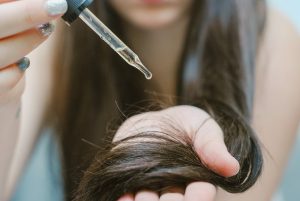
Hair growth serums range from homemade oils and even vinegar preparations to serum mixtures of minoxidil with vitamins and nutrients needed for your hair. Which style you choose is up to your preference, budget, and availability.
Serums, for the most part, take several weeks to improve hair growth, and months to show the full benefit. Most serums require that you continue using them to maintain benefits.
But, serums often show early signs of effectiveness, and it’s important to watch out for these positive indicators.
The first thing most people notice is more volume and luster in their existing hair. This is a sign of a happy scalp and better-moisturized hair strands. A good hair serum will often have this effect after only a few applications.
Many people also notice a slight hot/cold sensation, or even mild itching or tickling when they first start a new hair serum. This can be a good sign, but it’s important to monitor how intense the feeling is. Mild hot/cold or tickling sensations are a sign of circulation, and that’s a good thing. Those same feelings, but more intense or uncomfortable, can be a sign of an allergic reaction.
Serums are often some of the most effective hair growth treatments since they are applied directly to your scalp. But, they also require persistence, and you need to be careful about how much you apply. That can make serums one of the trickier hair regrowth tools.
But, if you’re up for a little challenge, your hair and scalp will reward you.
Hair Growth Shampoos
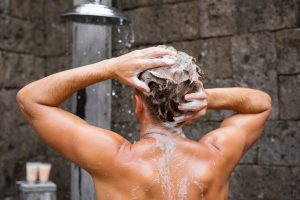
Hair growth shampoos are like serums, but you apply them instead of your regular shampoo in the shower. Many come in shampoo and conditioner combos, and you should use both products.
Most of these shampoos will also require that you leave them in a little longer than standard shampoos, which can increase your shower time. But, they’re usually the easiest hair regrowth treatments.
Unfortunately, their effectiveness varies quite a bit. Some shampoos are highly effective, but their effectiveness will still vary user to user.
Think of re-growth shampoos as one of the easiest, but also mildest, options you can take. Look for caffeine, ketoconazole, caster oil, and botanical ingredients in re-growth shampoos. Some will also include biotin, zinc, and other vitamins, all of which work toward addressing different health and growth factors in your hair and scalp.
Hair and Scalp Masks
Hair and scalp masks are a great way to get a quick boost, improve the strength of your hair, and make sure your scalp is getting critical nutrients. They’re also about the only re-growth treatment you can use intermittently and still get good results.
Hair masks can be used up to 3x a week, depending on the mask and your hair type. Or, you can use masks intermittently when your hair needs a boost, or when you’re trying to promote a brief period of growth.
These work by combining intense moisturizers with nutrients. The moisture helps carry the nutrients into your hair and scalp, increasing strand strength and helping make sure your hair follicles have what they need.
Some masks will also help stimulate circulation and fight DHT, but the effect is strictly short term.
However, we encourage anyone looking into hair re-growth to use hair masks. They are easy, relatively quick, and a great way to boost your confidence about your hair while it’s growing.
